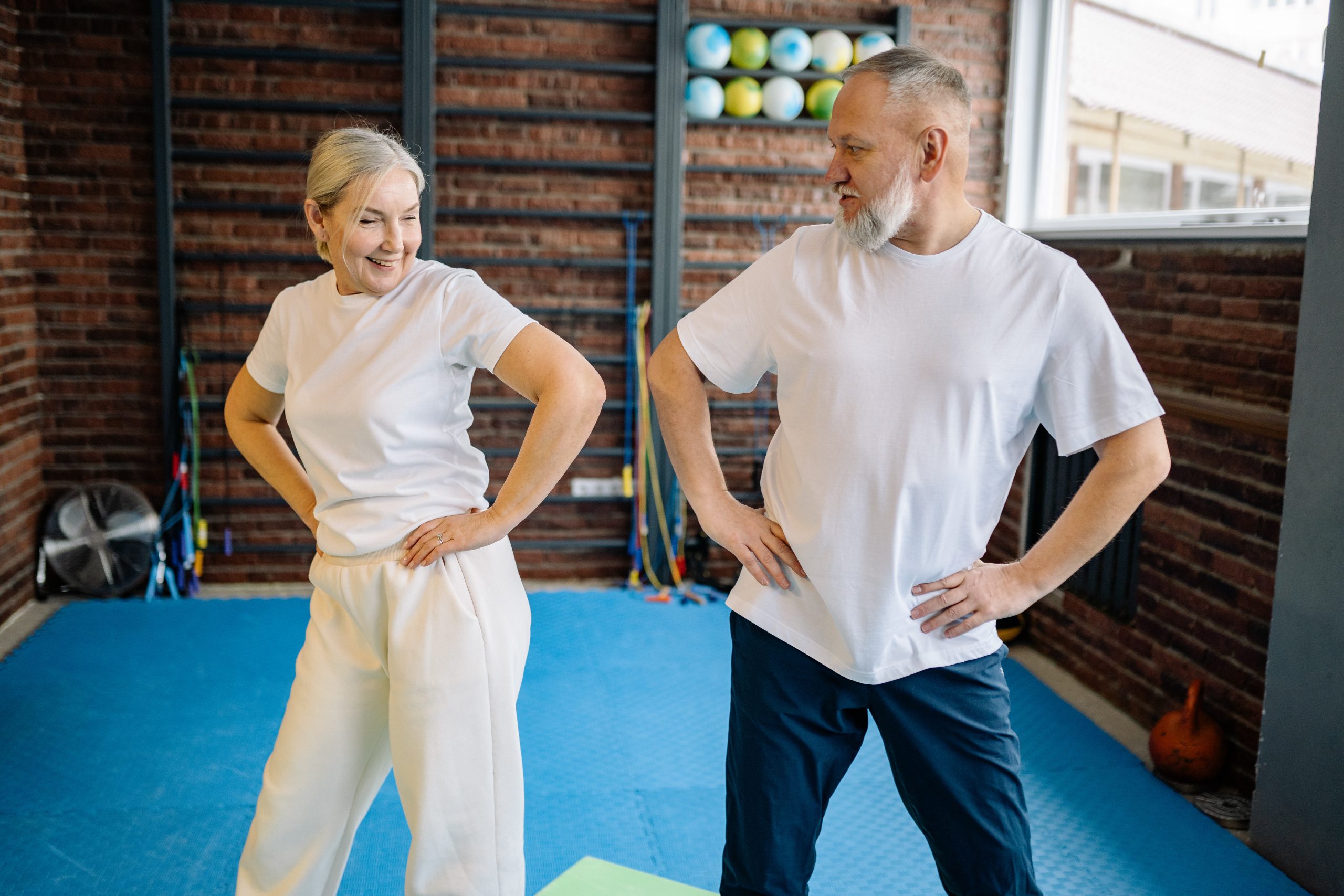
I think that each of us knows that physical activity is extremely important for a person. However, many people believe that physical exercises can harm or worsen existing health problems in old age. This belief is completely incorrect. People of all ages should be physically active.
Of course, not all exercises are equally suitable for young and elderly people. Additionally, for the elderly, the weights used in exercises should be significantly lighter.
So, what are some common health problems that can occur in older people? Let’s begin.
1. As a person grows older, their bones become weaker.
This is especially common for those who have led a sedentary lifestyle and haven’t had enough physical activity or consumed sufficient macronutrients and micronutrients throughout their lives. The loss of bone strength is osteoporosis. In this condition, the bones become less dense due to a reduction in bone tissue, resembling a sponge. Osteoporosis is very dangerous as it increases the risk of fractures.
2. Loss of muscle tissue or sarcopenia.
With age, especially with a lack of protein in the diet and a lack of physical activity, a person loses muscle mass. As a result, they feel that their muscles are no longer able to withstand the same load they could handle in their younger years. This condition can lead to negative consequences such as cardiovascular diseases, diabetes, immune deficiency, and chronic non-specific inflammation.
3. A similar condition called dynapenia is also related to muscles.
However, dynapenia is not the loss of muscle mass but rather a loss of muscle strength. This condition increases the risk of falls, feelings of weakness and fatigue, and ultimately premature mortality.
4. With age, the walls of the heart thicken and become less elastic.
This can lead to heart failure. The same processes occur in blood vessels, where they become less elastic, and their walls thicken. As a result, blood pressure doesn’t redistribute as quickly in the vessels, for example, when standing up, as it does in younger age, which can lead to dizziness or even loss of consciousness.
5. Type 2 diabetes is also a common disease among the elderly.
It arises due to insulin resistance, which is a reduced sensitivity of the body to insulin. Additionally, in old age, the muscle’s ability to absorb glucose decreases, leading to increased insulin secretion. The main symptoms of type 2 diabetes are weakness, dizziness, rapid fatigue, impaired memory and attention.
Based on the common age-related health issues, the main goals of engaging in physical activity should be:
- Maintaining muscle mass. Resistance training helps prevent and maintain muscle mass. It’s also important not to forget about proper nutrition, which should include an adequate amount of protein and vitamins. The recommended protein intake for older adults is 1.2 grams per kilogram (2.2 pounds) of body weight. The diet should also include fruits, vegetables, and fatty fish.
- Flexibility training is an important component of workouts for older individuals. It helps improve joint flexibility, alleviate muscle tension, and reduces the risk of injuries.
- Developing balance is also crucial during workouts for the elderly. These exercises are typically performed using body weight. Increasing balance ability reduces the risk of falls, which can lead to serious injuries in old age.
Important considerations for engaging in physical activity in old age include:
- The workload should be regular and gradual.
- Exercises should not cause discomfort during execution.
- Physical activity should be combined with proper nutrition and hydration.
- Wearing appropriate sportswear is recommended as it adds significance to your actions.
Physical activity should be diverse. According to the World Health Organization’s recommendations, the volume of physical activity for individuals over 65 years of age should be as follows:
- 150-300 minutes per week (20-45 minutes per day) of moderate-intensity aerobic physical activity OR 75-150 minutes per week (10-20 minutes per day) of vigorous-intensity aerobic physical activity.
- Strength training of moderate or higher intensity should be performed at least two days per week.
- Comprehensive physical exercises for balance and coordination should be performed at least three days per week.
Remember, it’s better to engage in some form of physical activity than to lead a sedentary lifestyle. Start with small physical exercises and gradually increase the intensity, duration, and regularity. It’s also important to match your physical activity intensity with your overall health.
Be physically active and enjoy life at any age!



